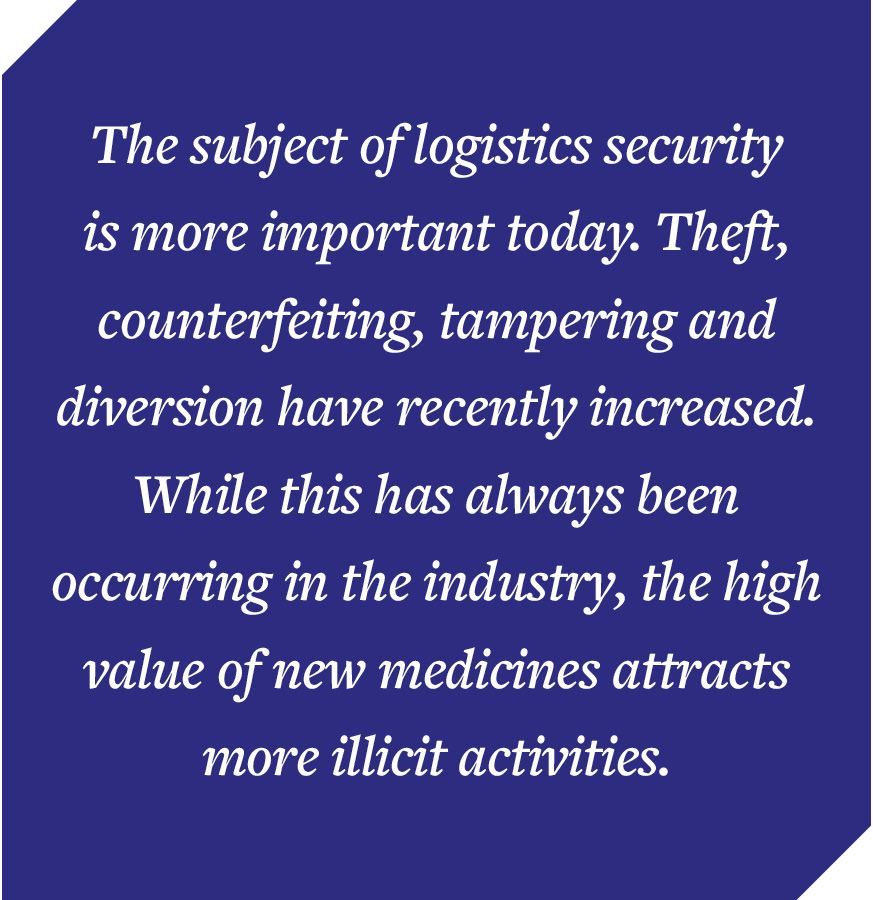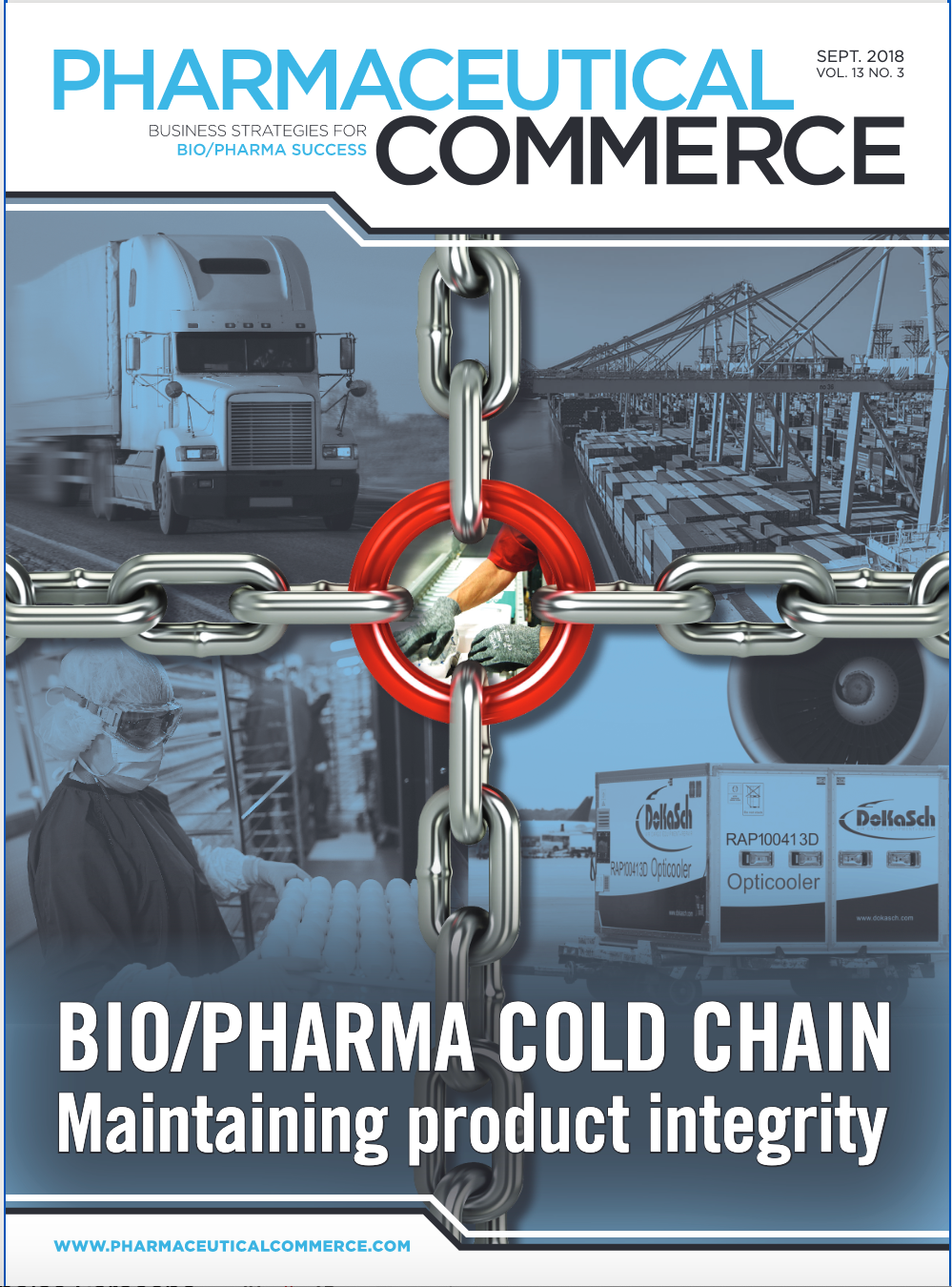A Conversation with Rafik Bishara
Known as the “King of Cold Chain,” Bishara looks both back and ahead at progress in upgrading pharma’s logistics practices
photo credit: Alexander Louvet / Powershoots.be

After a long tenure at Eli Lilly and Company, Rafik Bishara, PhD, entered a new phase in his career: a globally recognized authority on how the transportation, storage and distribution practices of the global pharma industry are defined and regulated. Even while at Lilly (from which he retired in 2004), he was instrumental in organizing the Pharmaceutical Cold Chain Interest Group (PCCIG), which began as an ad-hoc effort under the aegis of the Parenteral Drug Assn.
Dr. Bishara came to the US with a pharmacy degree from Cairo University in 1967, and added masters and doctorate degrees (PhD in bionucleonics from Purdue University) to that. Starting as a bench chemist, he rose through a variety of postings, eventually becoming Director of Quality, Knowledge Management and Technical Support. Along the way, he published prolifically; his c.v., which runs 23 pages, lists over 219 publications, training and conference proceedings.
For the past two decades, attendees of practically most conference involving life sciences cold-chain logistics, anywhere in the world, were accustomed to seeing Bishara, usually as the meeting chair, moderator or session leader, and certainly as a voice from the back of the room offering meaningful suggestions. (At presstime, he was scheduled to do this, again, at a new conference called FlyPharma, Miami, FL, Sept. 11-12; Pharmaceutical Commerce will also be on the agenda.) He is speaking at the 16th. Annual Cold Chain Global Forum, Philadelphia, Sept 26.
Bishara has also been an instructor and a mentor at PDA and WHO, respectively, and other organizations. He has served on several task teams of US Pharmacopeia, and maintains an active Technical Advising practice.
Pharmaceutical Commerce sat down with Dr. Bishara recently to talk about how the field of temperature-sensitive healthcare products is evolving; here is what he had to say.
1. Tell us about the early days of PCCIG, and the state of the art in managing the cold chain at that time.
As a group leader at Lilly, and then as a manager overseeing development through manufacturing, I got to see pharma commercialization at first hand. I had become involved with quality regulations and stability studies to determine expiration dates for Lilly drugs. That led to work with the US Pharmacopeia, and led to collaboration with Robert Seevers, PhD, then an FDA reviewer, who eventually joined me at Lilly. Together, we saw how the emphasis in industry was changing from small molecule pharmaceuticals to large biomolecules, proteins and peptides. These are fragile molecules, sensitive to heat or freezing.
Colleagues in the industry and I realized that we needed to pay attention to develop standards for the storage, handling and distribution of these products, even though the industry practice had been to, in effect, develop new products and “throw them over the wall” to warehousing and distribution to worry about. Shipping practices at the time were more “tribal knowledge” than science-based practices. So, what started as a discussion group within PDA became an interest group, Pharmaceutical Cold Chain Interest Group (PCCIG), and because I was so vociferous about this topic, I was chosen as chair. This led to the publication of PDA Technical Report No. 39, Cold Chain Guidance for Medicinal Products, in 2005.* With the help from our colleagues in Europe we revised the US-centric document to include the European points of view and the updated report was published in 2007.
At this point it became apparent to me that an European PCCIG needed to be formed. Thus, with the help of the Georg Roessling, PhD, VP PDA Europe we formed the PCCIG – European Branch. The leadership was eventually taken over by a dear colleague and friend Erik van Asselt, PhD, a QA and stability specialist at MSD, The Nederlands.
2. Today, there are many business and professional organizations who have a say in pharma logistics. How did this diversity come about?
In its early days, PCCIG was an active, dynamic group of scientists, analytical chemists, quality managers and others—nearly all of whom were volunteers contributing their time and efforts to improving industry practices. Over time, other parts of the pharma supply chain—wholesalers, freight forwarders, contract packaging organizations and others became involved. There was some resistance to this among pharma industry managers who believed that they should be the only voice guiding the industry, and that outsiders didn’t “know the business.”
At the same time, some industry organizations in the logistics field simply didn’t think that a focus on pharma was necessary, since it is such a small part of the global logistics industry. I said, “Excuse me? The vaccine or medicine your family might need is less important than the bananas or electronics you might be shipping? What can you do about ensuring that these life-saving healthcare products do not get frozen or overheated while being transported?”
You might say that PCCIG led the charge, but soon enough, other parts of the supply chain recognized the importance of handling, storage and distribution practices for healthcare products. A good example is the International Air Transport Assn. (IATA), where we began to hold meetings in the mid-2000s, eventually to develop the Time and Temperature Work Group, and the publication of 7th edition of the Perishable Cargo Regulations in 2007. That, in turn, led to the development of the Center of Excellence for Independent Validators – Pharma (CEIV Pharma), which is being widely adopted in air cargo.
A similar story can be told about ISTA, the International Safe Transit Association: Working with PCCIG, they updated their testing procedure for insulated shipping containers in 2011, now known as ISTA Reference Standard 7E.
Perhaps the biggest change in recent years was the development of the Good Distribution Practices guidelines in the European Union; these came out in 2013 and set up quality standards that are now followed in much of the world. I used to tell people, “Before you go to bed, say your prayers, and then pull out the EU GDP standards for a brief reading,” because they are so important to the industry. Now, however, the latest standard from the US Pharmacopeia, Chapters <659>, <1079>, and the proper use of Mean Kinetic Temperature (MKT) deserves your attention. May I recommend that you check the USP Pharmacopeial Forum published in July Volume 44 (4) and note that the comments should be sent to the USP before the end of September 2018. It was published this summer, and comments on it are being received by USP even now. It is scheduled to become final next year.
I am very humbled about all the efforts that many, many people have made over the years to make all this possible. I like the saying, “A trumpeter never stops moving his/her fingers”—that’s how I feel about advancing industry practices in pharma logistics. It is so important, because it involves life-saving products, and should be an ongoing process.
3. Is the industry “done”? Are all the standards and practices now in place, and are they being followed adequately?
In the past 15 or 20 years, the industry has moved from having ‘compartments’ that handle research, manufacturing and distribution. It used to be that R&D would hand off a product to manufacturing, and they would do the same for distribution. Now there is recognition that developers need to be involved with logistics from the very beginning of drug development. I have seen the needle move at the big pharma houses, making sure that the efficacy of products is not compromised in the supply chain. Is everyone complying? No, but the majority are following best practices. And this doesn’t mean that newcomers to the industry are ready—they need to be educated about the ‘why’ and the ‘what’ of good distribution practices (GDP). With that, the ‘how’ becomes easy.
Today, there are two schools of thought about monitoring shipments. One school is, I monitor every shipment, and I have data for that shipment; the other school is, I have studied my trade lanes, performed summer and winter condition studies, and qualified my processes. But for that latter school of thought, a risk is being assumed that an inspector may ask for specific data of a shipment on a specific date.
Another important issue is the ‘last mile’ in distribution—what happens when a drug is handed off to the members of the supply chain between the manufacturer and the patient. The farther away you are from the point of manufacture, the less control you have over what is going on with your medicines. In this regard, the factors such as quality agreements, contingency planning and real-time data become quite important to manage a secure, temperature-controlled supply chain.

Also, we have studied temperature and humidity and how it affects medicines for many years. Now, with new therapies such as personalized genetically engineered pharmaceuticals appearing, additional factors such as shock, drop, shake, vibration and pressure should be investigated. If you shake a protein compound in solution, it often may aggregate, which denatures the drug or vaccine and makes it lose efficacy. Now we’re hearing about using airborne drones to deliver medicines—what effects from differential pressure and vibration might occur there? These factors need to be studied.
The subject of logistics security is more important today. Theft, counterfeiting, tampering and diversion have recently increased. While this has always been occurring in the industry, the high value of new medicines attracts more illicit activities. At the same time, the internet has made it so easy to order medicines from anywhere in the world—but I worry that many consumers are looking only at the price of the medicines they buy, and not worried about the quality. Here I would recommend following another group, the Pharmaceutical Cargo Security Coalition, led by my good friend Chuck Forsaith. Familiarize yourself with the valuable work by the Rx-360 group, and know the standards that are developed by the TAPA organization.
In the past, prior to the current Good Distribution Practices (GDPs) such as PDA Technical Report No. 52, the EU GDP, the revised USP Chapters and proper use of the MKT mentioned above, incidents of mishandling, due to human errors and improper training, resulted in compromising the quality, integrity, potency and efficacy of the medicines and vaccines due to temperature excursions as an example. The use of these degraded products did not help the patients and have caused serious side effects including death. Currently, with these new regulatory and pharmacopeial standards, I have some peace of mind that we are all working together to provide the end user patient with safe and efficacious medicines.
I’ve been blessed to work with wonderful colleagues over the years. It’s important to keep positive attitude, invite people in to share their experience, and to continue to educate oneself. I try to share my knowledge with anyone who asks me—and this is important now in other parts of the world where industrialized-nations practices are not well established. A Caution I always share with my colleagues in the pharma supply chain is that the quality standards should be global because the patient in the USA, Europe, or Japan is as important to me as the patient in Africa, Asia, Latin America or any other part of the world. However, while we in the western hemisphere have the proper infrastructures many of the developing countries lack them. This then requires us to be creative and innovate proper packaging, monitoring, transporting and delivering the vaccines as an example in a way that will help the child or patient. The WHO has many documents and standards that should help all of us as experienced or new commers to the field of secure temperature-controlled pharma supply chain.
I would like to ask the readers and colleagues to reflect on “what have you done to one of those least of your brothers and sisters?” I challenge myself on a daily basis to answer this question.
Last but no least I am always remembering a saying we had at Lilly: “Take what you have today and make it better for tomorrow.”
